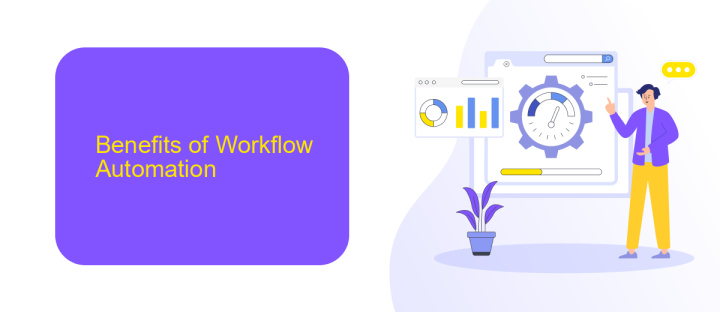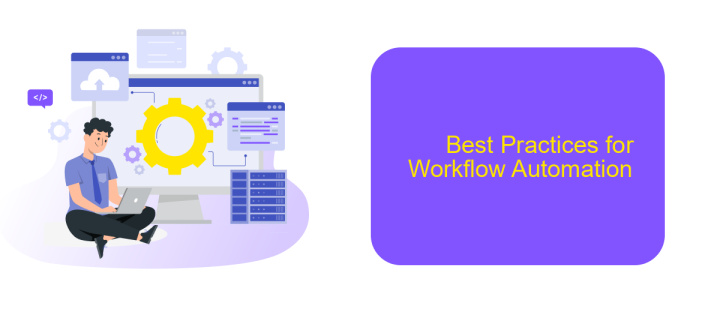Workflow Automation for Business
In today's fast-paced business environment, workflow automation has become essential for enhancing efficiency and productivity. By automating repetitive tasks, companies can streamline operations, reduce errors, and free up valuable time for strategic activities. This article explores the benefits of workflow automation, key tools available, and best practices for implementing automated processes to drive business success.
Introduction
Workflow automation is revolutionizing the way businesses operate, streamlining processes, and enhancing productivity. By automating repetitive tasks, companies can allocate more time to strategic activities, reduce human errors, and improve overall efficiency. This transformation is crucial for businesses aiming to stay competitive in today's fast-paced market.
- Reduces manual intervention
- Enhances productivity
- Minimizes errors
- Optimizes resource allocation
One of the key aspects of workflow automation is the integration of various tools and services. Platforms like ApiX-Drive facilitate seamless integration between different applications, enabling businesses to automate data transfer and synchronize operations without the need for complex coding. By leveraging such services, organizations can create a cohesive and automated workflow that adapts to their specific needs, ensuring smooth and efficient processes.
Benefits of Workflow Automation

Implementing workflow automation in business processes offers numerous advantages, significantly enhancing operational efficiency. By automating repetitive tasks, businesses can reduce human error, streamline operations, and free up valuable time for employees to focus on more strategic activities. This not only leads to higher productivity but also improves job satisfaction and employee morale, as mundane and time-consuming tasks are minimized.
Moreover, workflow automation facilitates better data management and integration across various platforms. Tools like ApiX-Drive enable seamless integration of different applications, ensuring a smooth flow of information and reducing the need for manual data entry. This leads to more accurate data, quicker decision-making, and enhanced overall business performance. By leveraging these automation tools, companies can stay competitive, adapt to market changes more swiftly, and ultimately drive growth and innovation.
Steps to Implement Workflow Automation

Implementing workflow automation in your business can significantly enhance efficiency and reduce manual errors. To get started, follow these essential steps:
- Identify Processes for Automation: Begin by evaluating your current workflows to identify repetitive tasks that can be automated. Focus on processes that are time-consuming and prone to human error.
- Select the Right Tools: Choose automation tools that best fit your business needs. For instance, ApiX-Drive is a versatile service that helps integrate various applications, streamlining data flow and reducing manual intervention.
- Set Clear Objectives: Define what you aim to achieve with automation. This could be reducing processing time, minimizing errors, or improving overall productivity.
- Develop an Implementation Plan: Create a detailed plan outlining the steps, timeline, and resources needed for implementation. Ensure you have buy-in from all stakeholders.
- Test and Optimize: Before full-scale deployment, test the automated workflows in a controlled environment. Gather feedback and make necessary adjustments to optimize performance.
- Monitor and Maintain: Continuously monitor the automated processes to ensure they are functioning as expected. Regular maintenance and updates are crucial to keep the system running smoothly.
By following these steps, you can effectively implement workflow automation in your business, leading to increased efficiency and better resource management. Tools like ApiX-Drive can facilitate seamless integration and automation, making the transition smoother and more effective.
Best Practices for Workflow Automation

Implementing workflow automation in business can significantly enhance productivity and reduce manual errors. To ensure successful automation, it’s crucial to follow best practices that align with your business goals and technical capabilities.
Firstly, start by identifying repetitive tasks that consume a lot of time and resources. Analyze these tasks to determine if they can be automated effectively. It's important to choose the right tools and software that fit your business needs.
- Define clear objectives and goals for automation.
- Select reliable automation tools like ApiX-Drive for seamless integrations.
- Test and monitor automated workflows regularly to ensure they function correctly.
- Train your team to adapt to new automated processes.
- Continuously review and optimize workflows for better efficiency.
Using services like ApiX-Drive can help streamline the integration process, making it easier to connect various applications and automate workflows without needing extensive technical expertise. By adhering to these best practices, businesses can maximize the benefits of workflow automation and drive significant improvements in operational efficiency.


Conclusion
In conclusion, workflow automation stands as a pivotal tool for modern businesses aiming to enhance efficiency, reduce errors, and streamline operations. By automating repetitive tasks, companies can reallocate valuable human resources to more strategic initiatives, fostering innovation and growth. The integration of various applications and services is fundamental to achieving seamless automation, and platforms like ApiX-Drive play a crucial role in this process.
ApiX-Drive simplifies the integration of diverse systems, enabling businesses to connect their tools effortlessly and ensure smooth data flow across platforms. This not only saves time but also minimizes the risk of manual errors, leading to more reliable and consistent outcomes. As businesses continue to evolve in the digital age, embracing workflow automation and leveraging integration services like ApiX-Drive will be key to maintaining a competitive edge and driving long-term success.
FAQ
What is workflow automation?
How can workflow automation benefit my business?
What types of tasks can be automated in a business setting?
How do I get started with workflow automation?
Can workflow automation be customized to fit specific business needs?
Time is the most valuable resource in today's business realities. By eliminating the routine from work processes, you will get more opportunities to implement the most daring plans and ideas. Choose – you can continue to waste time, money and nerves on inefficient solutions, or you can use ApiX-Drive, automating work processes and achieving results with minimal investment of money, effort and human resources.

